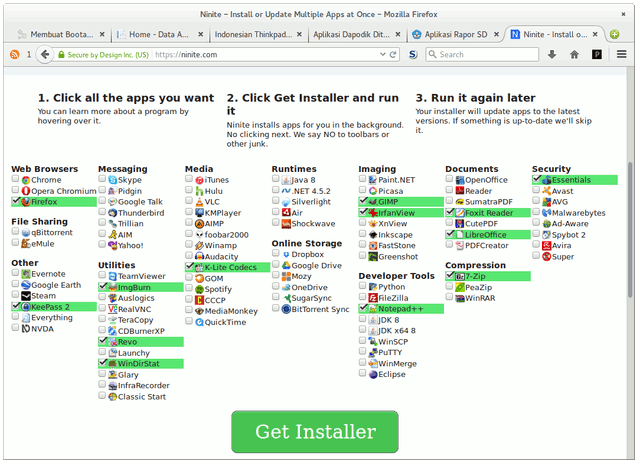
You can choose the software to be installed and then Ninite will automatically download and install them silently in the background in your Windows system. It also avoids the installation of unwanted toolbars and PUPs that usually piggyback the intended software installer packages. Ninite is a simple solution for the third party software installation requirements in Windows. But why go through all this ordeal, when Ninite can do it all automatically for you. You can do this all manually by downloading software from the websites of the respective products, but you have to manually go through all the setup installation steps, clicking the “Next” and “I Agree” buttons many times. Moreover, some of the software installers come packed with unwanted toolbars and promotional programs that you must be careful and alert for, so that you can choose not to install these. That said, a lot of users, including myself, still use it.As soon as you are finished installing a fresh copy of Microsoft Windows, you think of installing the essential third party software like picture viewers, archiving tools, web browsers, antivirus software and so on. I use it to manage my music library, import new content, create a playlist, and sync with my Apple devices. With Windows 10, some users have been reporting problems with getting it to upgrade from older versions or install successfully. Here are some tips to ensure you get it working correctly. Get iTunes Installed on Windows 10 #įirst, you should follow these basic pre-requisites:Ĭlose iTunes if it’s open. iTunes tends to stay resident in memory, so a reboot is likely recommended. Also, disable iTunes Helper from starting up with Windows.

Check out our article for disabling startup items in Windows 10.If you have any Apple devices attached to your PC, disconnect them for the moment.Make sure you download the right architecture (32 or 64-bit) for your PC here. The download page defaults to your architecture, but if you were previously running a 32-bit version of Windows but then switched to 64-bit Windows 10, the 32-bit installer might be a factor why it is not working properly.Save the setup file to the hard disk, do not run setup from its current location. Right-click the iTunes setup file, then click Run as administrator.Ĭlick Next, then click Install. If iTunes does not install successfully, there are some things you can try. Start by uninstalling any existing installation of iTunes.

Press Windows key+R, then type: appwiz.cpl and hit Enter. Scroll down and select iTunes, then click Uninstall on the command bar.


 0 kommentar(er)
0 kommentar(er)
